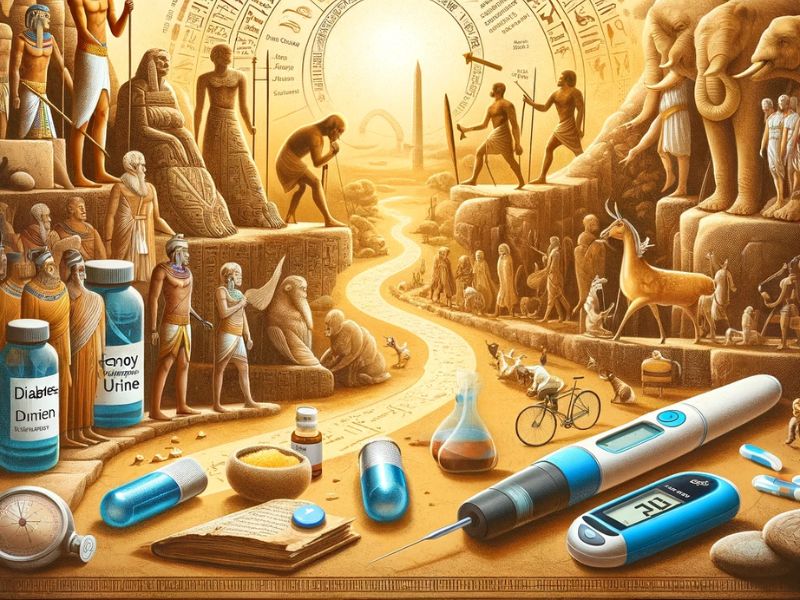
Journey through the history of diabetes
An investigation into the origins and evolution of diabetes treatment
Diabetes, one of the most prevalent diseases worldwide, has a long and complex history dating back thousands of years. This article explores the origins of the disease, early descriptions and treatments, up to modern advancements that have transformed diabetes management.
The ancient roots of diabetes
The earliest documented reference to diabetes is found in the Ebers Papyrus, dating back to 1550 BC, where there is mention of “eliminating urine that is too abundant“. This description could refer to polyuria, a common symptom of this disease. Ayurvedic texts from India, around the 5th or 6th century BC, also described a condition known as “madhumeha” or “sweet urine,” thus recognizing the presence of sugar in the urine and suggesting dietary treatments for the disease.
Advancements in antiquity and the Middle Ages
In 150 AD, the Greek physician Areteo described the disease as “the melting down of flesh and limbs in the urine“, a graphic representation of the devastating symptoms of diabetes. For centuries, diabetes was diagnosed through the sweet taste of urine, a primitive but effective method. It wasn’t until the 17th century that the term “mellitus” was added to the name diabetes to emphasize this characteristic.
The discovery of insulin
Despite numerous attempts to manage this disease with diet and exercise, prior to the discovery of insulin, the disease inevitably led to premature death. The major breakthrough came in 1922 when Frederick Banting and his team successfully treated a diabetic patient with insulin, earning them the Nobel Prize in Medicine the following year.
Diabetes today
Today, the treatment of diabetes has significantly evolved with insulin remaining the primary therapy for type 1 diabetes, while other drugs have been developed to help control blood glucose levels. Diabetic patients can self-monitor their blood sugar levels and manage the disease through lifestyle changes, diet, exercise, insulin, and other medications.
The history of this disease highlights not only humanity’s long struggle to defeat it but also the significant medical advancements that have improved the quality of life for millions of people worldwide.
Sources


